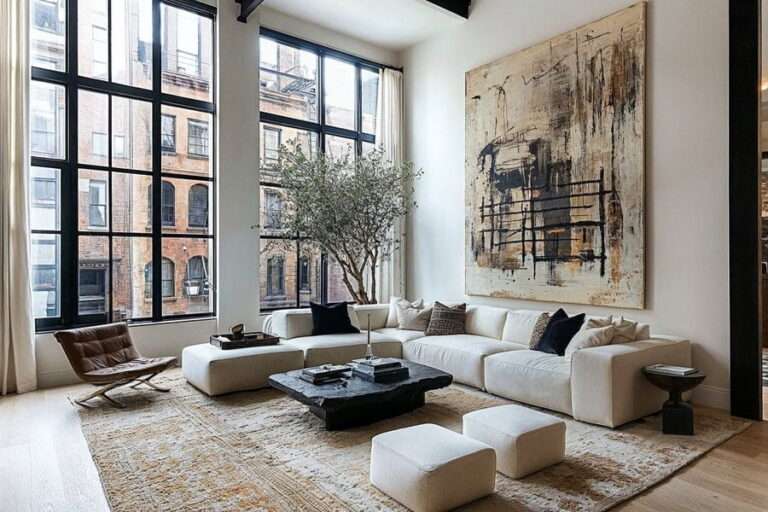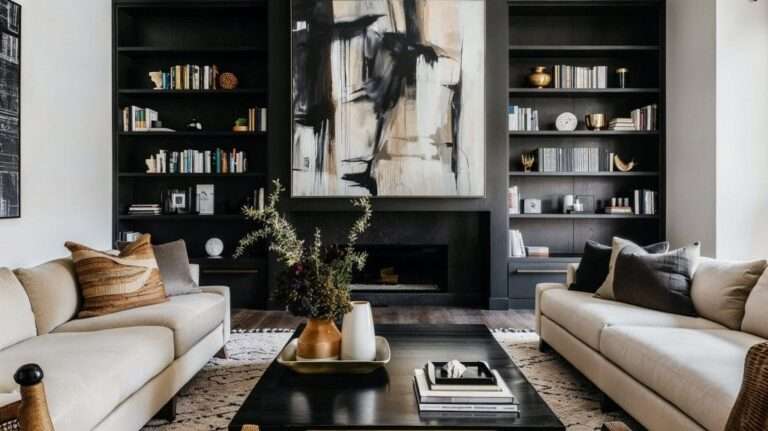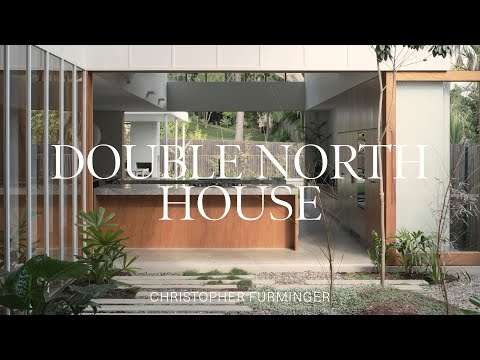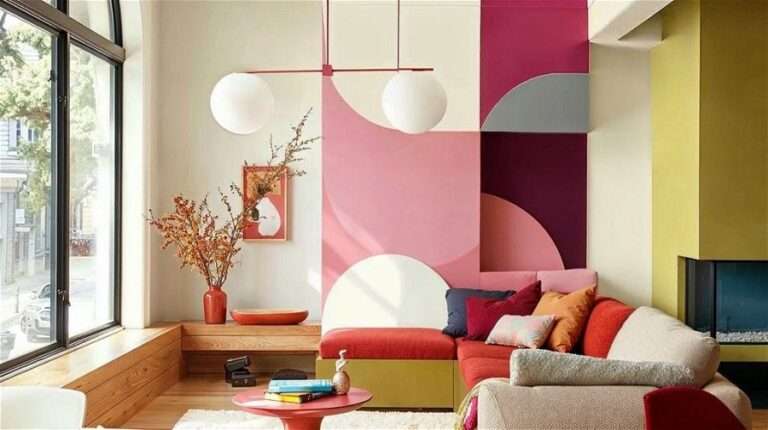Is it even possible to bring castlecore design ideas into a contemporary, livable space? Can stone, shadow, and weight exist without a literal castle? Big yes. These castlecore style decor ideas focus on a fantasy-free approach to elements, materials, and atmosphere that together convey fantastic results.
What Is Castlecore Style
Castlecore interior design doesn’t gesture at royalty. It’s not about nostalgia for “the old world,” nor is it fantasy cosplay. What sets the castlecore style apart is its attention to density, to the feeling of permanence. Think of it as spaces built to feel like they’ll outlast the people living in them.
Castlecore design ideas thrive on shapes and shadows. Archways that curve around the room, molding, heavy timber, deep recesses, candlelight with intention. And no, that doesn’t require a literal castle. A simple apartment can also hold castlecore design ideas if the materials are honest and the spatial tone is serious.
Wondering if castlecore decor is the right choice for you? Try our Free Interior Design Style Quiz to discover your ideal style today!
Best Castlecore Design Ideas
Aim for an honest look as much as possible and stay away from a theatrical staging filled with replicas. If you want a medieval reference, let it be through form, not iconography. No shields. No swords. A rough stool does more work than a faux goblet ever will.
1. Stone Where It Counts
Not every surface has to be stone, but something should be. Even if it’s a single reclaimed slab in the entryway or a honed travertine ledge in the bathroom, real stone gives a room weight. Careful here: too much fake stone and the space tips into set design. Castlecore design ideas depend on material truth—cool under hand, matte in the shadows. The goal isn’t rustic but elemental.
Pro Tip: Choose one zone to carry the stone—like a hearth wall, a windowsill, or a bathroom vanity—then light it minimally and let shadow do the rest.
2. Built-in Depth: Niches, Alcoves, & Curves
A castlecore-style room benefits from thickness—not always in structure, but in how surfaces are handled. Walls gain authority when they hold something: a niche, a shelf, a curve that doesn’t feel applied but carved. Shallow alcoves lined in plaster or inset stone can make the architecture read deeper, even when the footprint stays modest. Arches can be folded into this, framing a recess or softening a transition. Just keep in mind that, in castlecore design ideas, these elements function best when they’re part of how the room organizes itself.
Pro Tip: Paint the niche interior a few shades darker than the wall to exaggerate shadow and give it visual heft.
3. Lighting That Completes the Castlecore Decor
Lighting in a castlecore-style interior works best when it feels tied to material and mass. Fixtures should be shaped from iron, patinated brass, or aged bronze—finishes that catch low light without reflecting it too sharply. Wall sconces are effective when installed at shoulder height, where they cast horizontal light across textured surfaces. Chandeliers should be compact, made from forged or riveted metal, often circular, with candle-style arms or shallow bowls.
Pro Tip: Choose warm bulbs with minimal glare. The light should settle into the space, not spread across it.
4. Atmospheric Drapery
When it comes to castlecore design ideas, drapery literally shapes the air. Heavy textiles mute the sharpness of daylight, slow down motion, and settle the temperature of space. Thick linen and raw silk do it best—textiles that hang with their own weight, fall close to the floor, and carry folds that read even in low light. They hold the perimeter without needing to call attention. The movement is quieter, while the light that comes through is directional, softened, more like a shadow than a beam.
Pro Tip: Mount them high and wide. Let the cloth collect slightly at the base so it doesn’t just end but pools, thickens, and rests.
5. Time-Honored Looking Materials
The surface is the first thing you feel in a castlecore interior. Use wood that shows its past: boards with uneven finish, knots that interrupt the grain, edges that don’t align too neatly. Similarly, wrought iron should feel dense in hand and even leave marks if handled often. These aren’t plain finishes; they’re structural to the atmosphere. Castlecore design ideas shaped from the right materials render rooms solid even before they’re furnished. In other words, you don’t need to overdo it to tell a story when materials already suggest one.
Pro Tip: Don’t over-coordinate. Let differences appear between pieces, like pale wood next to darker flooring.
6. Beds Fit for a King (Not Necessarily King-Size, Though)
The bed carries weight in both senses. Visually, it sets the balance of the room. Spatially, it becomes a frame inside the larger structure. A four-poster bed does this without explanation, not to mention it’s a staple of the castlecore style. The posts rise, square or round, carrying their own mass and defining a zone that holds its shape even when the rest of the room is soft. Curtains or a canopy can follow, depending on the ceiling and the feeling you want to contain.
Pro Tip: Let the bed take more floor than expected. Proportion can be bent in a castlecore-style bedroom.
7. Castlecore Design Ideas Need Some Fire
A fireplace, even if non-functional, is essential. Not so much for heat nowadays, but for spatial authority. If you can build one, do it in brick, stone, or plaster with a clear base and deep reveal. If you can’t, build just the cavity, paint it dark, and fit it with a concrete slab or finish in tiles that absorb light. You can leave the feature as it is then, or integrate an electric insert for more atmosphere. A wide mantel in plaster or stone should sit at eye height and carry the room’s balance.
Pro Tip: Top it with castlecore decor such as stone urns, a single taper, or a mirror that doesn’t gleam.
8. Tapestry, Yes. But Not the Way You Think
Don’t think medieval wall hangings here. Think texture that reads from across the room: heavy weaves, natural dyes, no sheen. Tapestry in a modern castlecore context could mean a stretched textile, a framed vintage rug, or a suspended canvas. The point is to absorb sound, hold warmth, and slow the eye. And, of course, feel free to hang an authentic tapestry if you love them!
Pro Tip: Mount your suspended textile slightly away from the wall so it casts a shallow shadow.
Designer-Recommended Castlecore Decor
Castlecore design ideas work when the decor doesn’t announce itself. You’re not building a film set. Also, if you have to ask whether something looks “castlecore enough,” it probably doesn’t belong. Here are some suggestions to help you calibrate a tone.
Looking for castlecore design ideas tailored to your space and taste?
Work with an expert-vetted professional designer to add a touch of history to your home. Book your Free Online Interior Design Consultation to get started today!






